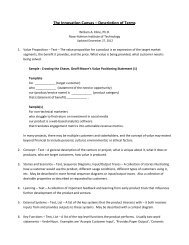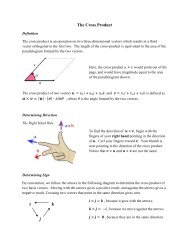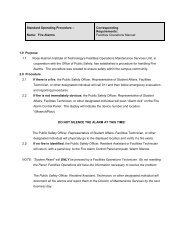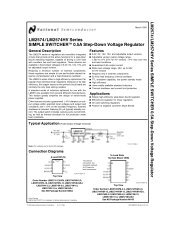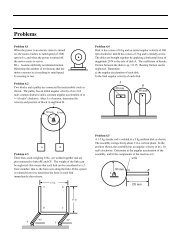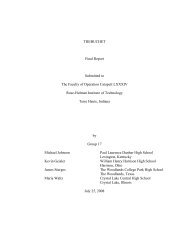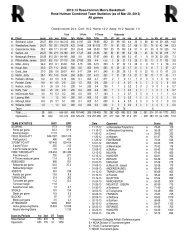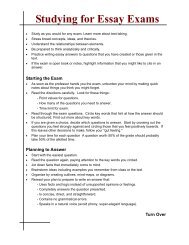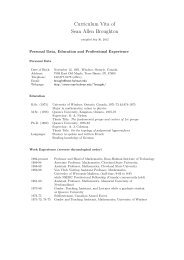21 Photosynthesis (Carbon Assimilation) The light ... - Rose-Hulman
21 Photosynthesis (Carbon Assimilation) The light ... - Rose-Hulman
21 Photosynthesis (Carbon Assimilation) The light ... - Rose-Hulman
Create successful ePaper yourself
Turn your PDF publications into a flip-book with our unique Google optimized e-Paper software.
metabolism in the other parts of the cell. To allow this, dihydroxyacetone phosphate<br />
leaves the chloroplast in exchange for phosphate (as above). However, the<br />
dihydroxyacetone phosphate is converted to 3-phosphoglycerate using the glycolytic<br />
enzymes triose phosphate isomerase, glyceraldehyde-3-phosphate dehydrogenase,<br />
and phosphoglycerate kinase. <strong>The</strong>se reactions generate NADH and ATP in the<br />
cytoplasm. <strong>The</strong> 3-phosphoglycerate produced then re-enters the chloroplast using<br />
the phosphate/triose phosphate antiport, and is reconverted to dihydroxyacetone<br />
phosphate using the enzymes of the carbon assimilation pathway.<br />
Glycolysis<br />
Sucrose synthesis<br />
Dihydroxyacetone<br />
phosphate<br />
Triose phosphate<br />
isomerase<br />
P i<br />
Triose phosphate/Phosphate<br />
Exchanger<br />
Dihydroxyacetone<br />
phosphate<br />
P i<br />
Triose phosphate<br />
isomerase<br />
NAD<br />
+ P i NADH ADP ATP<br />
1,3-Bisphosphoglyceratglycerate<br />
3-Phospho-<br />
Glyceraldehyde<br />
Phosphoglycerate<br />
3-phosphate<br />
kinase<br />
dehydrogenase<br />
P i<br />
Cytosol<br />
Triose phosphate/Phosphate<br />
Chloroplast Inner Membrane<br />
Exchanger<br />
Stroma<br />
P i<br />
Glyceraldehyde<br />
3-phosphate<br />
Phosphoglycerate<br />
dehydrogenase<br />
1,3-Bisphosphoglyceratglycerate<br />
kinase 3-Phospho-<br />
NADP NADPH<br />
ADP ATP<br />
+ P i<br />
Glyceraldehyde<br />
3-phosphate<br />
Glyceraldehyde<br />
3-phosphate<br />
<strong>The</strong> shuttle system can therefore be used to move ATP and reducing equivalents,<br />
without using carbon compounds; alternatively, the dihydroxyacetone phosphate<br />
can leave the chloroplast, with only phosphate returning.<br />
3) Sucrose synthesis: Sucrose is a non-reducing (and therefore chemically less<br />
reactive) disaccharide of fructose and glucose used<br />
HO CH<br />
to transport energy from photosynthetic<br />
2 -D-Glucopyranosyl<br />
O<br />
apparatus to non-photosynthetic cells. Production OH<br />
of sucrose occurs in the cytoplasm.<br />
As with starch production, sucrose synthesis is<br />
regulated by availability of triose phosphates. <strong>The</strong><br />
relative levels of starch and sucrose production<br />
are tightly regulated to prevent the<br />
photosynthetic cell from depleting its energy<br />
stores.<br />
HO<br />
OH<br />
CH 2<br />
OH<br />
O<br />
OH<br />
HO<br />
O<br />
Sucrose<br />
(1--D-glucopyranosido-<br />
-D-fructofuranoside<br />
CH 2 OH<br />
-D-Fructofuranoside<br />
Copyright © 2010-2011 by Mark Brandt, Ph.D.<br />
28





